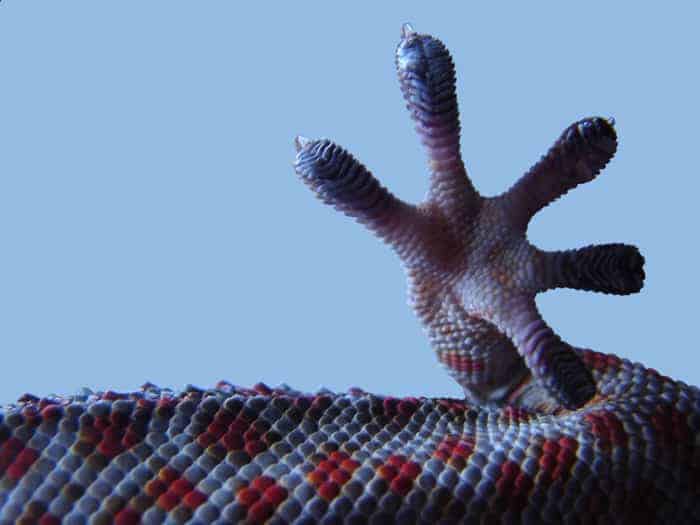
Geckos sprint across the surface of water using a combination of body motion and surface tension. The lizard’s technique was revealed by high-speed observations made by Jasmine Nirody at the University of Oxford and colleagues in the UK, US and Germany. Their work could inform designs of quadrupedal robots which mimic the actions of geckos to run across water.
Currently, over 1000 animal species are known to have mechanisms for moving across the surface of water without sinking. On smaller scales, animals including insects are able to stay afloat even when standing still due to the effects of surface tension. For animals such as the basilisk lizard, however, surface tension has a negligible effect; instead, these species can move by vigorously slapping the water with their legs, while propelling themselves forwards with their tails.
Geckos lie in between these size regimes and this raises the question of whether they exploit surface tension to move, or whether their body motions are more influential?
Trotting gait
In their study, Nirody’s team used high-speed cameras to analyse the gaits of geckos running across tanks of water in their lab. The observations confirmed that the lizards use a combination of mechanisms when running, including a distinctive trotting gait that creates air cavities below the water’s surface, allowing the animals to keep their heads and upper bodies above water as they ran. In addition, the geckos laterally undulated their submerged tails and lower bodies to generate thrust for forward propulsion, while their superhydrophobic skin reduced drag.

Static electricity helps geckos get a grip
To test for the influence of surface tension, Nirody and colleagues reduced its impact by adding soap to the water. The cameras confirmed that the velocities of lizards sprinting across this soapy water were reduced by down to half their normal values compared to those in pure water. The result revealed that unlike larger species, geckos do indeed exploit surface tension when running across water, although this advantage must be combined with other physical mechanisms in order for them to stay afloat.
The team believes that a better understanding of this combination of processes could inform new designs of quadrupedal water-running robots, which exploit similar mechanisms to stay above the water’s surface. Such robots could be used for applications including search-and-rescue operations during floods. Nirody now hopes to use the insights gained in the study to carry out similar experiments with flagellating bacteria such as e-coli, potentially informing designs of microbe-mimicking nanobots for use in drug delivery.
The research is described in Current Biology.



